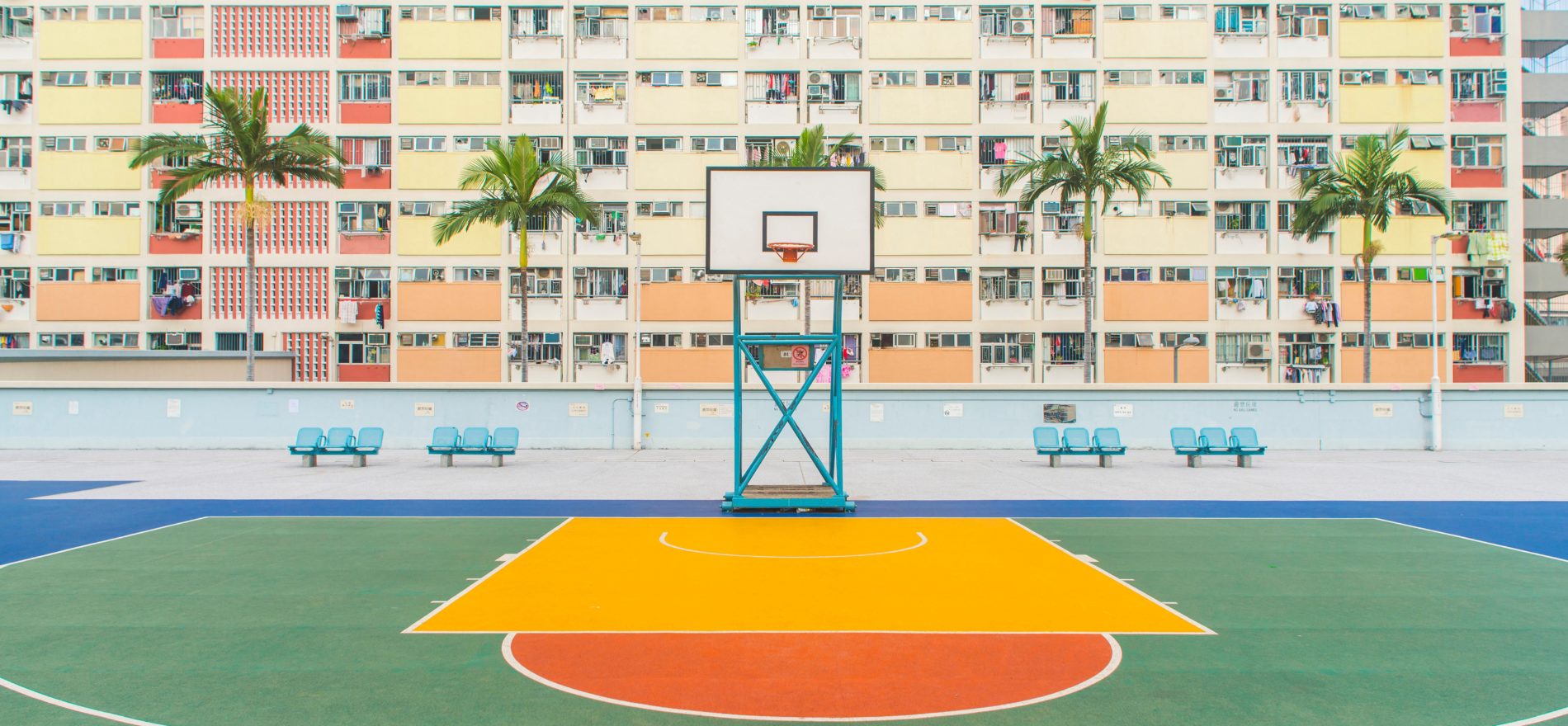In mid-October, the Connecticut Sun beat the Los Angeles Sparks 84-75 in an exciting first game of the WNBA semifinals. Thanks to Ken Colombe ‘20 who was interning with the Sun, Conn students were able to attend two home playoff games free of charge. My friends and I pounced on the opportunity with about two-three dozen other Conn students. The Sun eventually swept the series against the Sparks and went on to play a very competitive five games against the Washington Mystics for the WNBA Championship. My friends and I also paid for tickets to watch the Sun’s second home game against the Mystics in the WNBA finals. It was an elimination game, the Sun were down 2-1 and my friends and I had developed a burning passion for WNBA basketball in a quick three weeks. At the semifinals game, Conn students quickly established their fan favorites, and in the days leading up to Game 4 of the finals we talked about how forward Jonquel Jones, who led the league in rebounds in 2017, was a force to be reckoned with in the paint, and how Courtney Williams was essentially a walking bucket. We were certified Sun fans, fully ready to commit to becoming super-fans after graduation if they won the elimination game we were attending and then the championship.
True, we were bandwagoners. There’s no doubt about it. But we weren’t delusional; the Sun were going to have to match up with Elena Delle Donne, the 2019 WNBA MVP who just had a legendary 50-40-90 (50% field goals, 40% 3-point shooting and 90% free throws in one season) season. We worried she was going to really flex her muscles as a shooting maestro and ruin the Sun’s, and our, hopes for WNBA glory.
It might seem funny that four dudes are so passionate about WNBA basketball, but the truth is, it’s good basketball. And we’re fans of the game. In her second MVP season Elena Delle Donne became the first woman to join the 50-40-90 club; in 74 seasons of NBA basketball only eight men have achieved the feat. At the end of the day we were rooting for the home team, but we were also rooting for the best players on the floor, and in turn the success of the league.
But don’t take my word for it. Ken Colombe ‘20 interned with the organization through their championship run. When I spoke to him it was clear that he was grateful for his time with the Sun and impressed with the caliber of basketball he witnessed on the hardwood at the Mohegan Sun Arena in Uncasville, CT. Ken told me that, “working in the WNBA was an amazing experience. The women in the league are incredible athletes and players so it was surreal seeing them play everyday. [They play] some of the best basketball in the world.” And if you won’t take Ken’s word it, maybe NBA star Badley Beal can help you change your mind.
In a Players’ Tribune article called Masks On that Beal penned mid-way through the WNBA championship, he reflected on learning basketball from his mother, and championed the phrase “basketball is basketball.” He talked about how eventual Finals-MVP Emma Meesseman was in “Playoff Emma!” mode and even compared her to an NBA player with a similar style of game. In fact, Beal is such a genuine fan of the WNBA (see the adage “game respects game”) that he not only attended the Washington Mystics home games in the finals, but he also works out with one of their players, Kristi Toliver, who is a Washington Wizards assistant coach during her off season. Toliver, Beal says, has one of the sharpest basketball minds he’s ever encountered, and that he relishes the opportunity to work with her and perfect his game. “I’m a much better player for having gotten to work with Kristi, no doubt,” he writes.
So Ken, Bradley Beal, my friends, and I all agree that the WNBA is full of extra talented cerebral players. We agree that the price of attendance is well worth the product they put on the floor is a good product. So why aren’t these women receiving the same spectacular contracts that their male counterparts in the NBA are getting?
Beal doesn’t dance around the question: “these women need to get paid.” Neither does Ken: “It is high level basketball and I think once people see that, [the WNBA] will garner the interest it deserves.” I’d put it bluntly: these women are not treated like they are actually good basketball players in a country that massively rewards good basketball players — but they also play in a league that’s still emerging.
Ken points out that the WNBA needs to grow in popularity for this change to happen. In an article in the Spanish newspaper Marca, two-time NBA champion Pau Gasol expressed similar sentiments: “Women’s sports must be paid in conditions similar to men’s, but … women’s competitions must be able to generate more so that their central players can be rewarded. In the NBA … Salaries were very low in the 1980s. Magic [Johnson], a legend of the NBA, earned a million dollars per season. Since then they began to build a league.” The truth is, even though the WNBA features seriously talented players, it is an emerging league, having only been around for 22 seasons.
In 2018, when the WNBA was in its 21st season, total league attendance reached 1,574,078, with an average attendance of 7,716 fans. It took the NBA 26 seasons to average crowds that large. The NBA has had decades to spend billions of dollars to grow its fan base both in the US and internationally, and it has paid off wonderfully. The league makes billions of dollars in profit every season, and in turn the players receive about 50% of the league’s revenue through their salaries, according to David Berri, Professor of Economics at Southern Utah University. The WNBA is in its nascent stages, and it has the economic makeup of an expanding league. Not all 12 teams regularly turn a profit, and in turn the league is not nearly as profitable as the NBA, but that’s not a reason for the players to only be earning 22% of the WNBA’s revenue, according to Berri’s data.
The WNBA is underpaying its players. The maximum veteran salary for the WNBA was $113,500 in 2017. But according to Nancy Lough, Professor of Educational Psychology & Higher Education at the University of Nevada, Las Vegas, when the NBA started to attract a similar number of fans as the WNBA did in 2018 (1971-1972 season), the average player salary was $90,000, which would be roughly $500,000 today. I’m not saying that the players should be getting the same multimillion dollar deals that NBA stars are getting right now, and neither are the WNBA players. They just want to get their fair share of the pie.
Nevermind that the WNBA was the first major professional sports league in the US to put sponsors on their jerseys in 2009 (a change the NBA followed in 2017), or that they are breaking ground by being the first major professional sports league in the US to market directly to the LGBTQ community (According to The Washington Post, a 2012 study commissioned by the WNBA found that “25 percent of lesbians watch the league’s games on TV while 21 percent have attended a game,”); the argument is always going to be that WNBA games aren’t as interesting or exciting to fans as the NBA, since most of the fans are male and men’s basketball has higher viewership. However, for something to become interesting to the general public, it has to be plastered all over the media. The NBA spent billions promoting the league, but it took time to get to the level of popularity it is at now. If the talent level remains the same and continues to improve as expected, the WNBA may be able to prove the doubters wrong.
Because the women in the WNBA get paid so little, they have to supplement their income as soon as the season ends. Last year, half the Sun’s roster played overseas in the summer: Jonquel Jones and Brionna Jones played in a Russian league, Courtney Williams and Rachel Banhan were playing in Spain, and Alyssa Thomas was on the best team in the Czech Republic. This year, Washington Mystics player Emma Meesseman is already in the playoffs in Russia, Myisha Hines-Allen, told The Washington Post she had, “like two weeks” between winning the championship and flying to South Korea. Mystics rookie guard Kim Mestdagh is playing in France. Unlike NBA players, for these women, there is no off-season if they want to earn a living. This means they have to wait until the Spring — that’s right, a separate calendar year — to have their championship parade. The reigning NBA champion Toronto Raptors had their parade a few days after beating the Golden State Warriors. Shouldn’t the same apply to the WNBA champions?
To younger Conn students who are fans of basketball and still have their doubts about the WNBA, I say this: The games are fun, the atmosphere is great, and beer and hot dogs are much cheaper at Mo Sun then they are in an NBA arena. It’s affordable, and the players are good, so it’s easy to get into. Not only that, but you get to feel good about yourself because every game you go to or watch on TV helps the league earn money and grow in popularity. Go watch some WNBA basketball when it’s back. You won’t regret it. •









